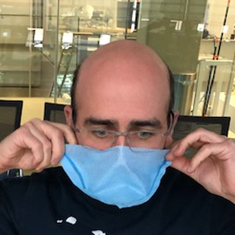News Story
Canon, Clark School Launch New Collaboration
Canon U.S. Life Sciences, Inc., a subsidiary of Canon U.S.A., Inc., and the Clark School have launched a new research collaboration to develop a highly automated system providing rapid infectious disease diagnosis. Utilizing Canon U.S. Life Sciences’ proprietary genetic analysis system, the project aims to expedite the delivery of infectious disease test results while also simplifying the test process to allow a variety of clinical staff to perform automated disease diagnosis.
The research team is led by Hiroshi Inoue, senior fellow, Canon U.S. Life Sciences, and William Bentley, chair of the Clark School's Fischell Department of Bioengineering. Together with co-researchers Keith Herold and Ian White, both of bioengineering, they will pioneer the use of microfluidic chip technology in disposable testing cartridges containing human blood samples.
Leveraging Canon U.S. Life Sciences’ genetic analysis technology, the high-throughput cartridge system will identify bacterial pathogens in human blood by using genetic matching technology, thereby cutting the length of time required to test a sample from several days to one hour.
“Through our continued research in the area of molecular diagnostics, we are excited to be aligning our efforts with the University of Maryland,” said Takayoshi Hanagata, president, Canon U.S. Life Sciences, Inc. “The combination of Canon U.S. Life Sciences core technologies and the University’s leading-edge research capabilities, will allow us to create new diagnostic applications designed to offer enhanced flexibility as well as reduced costs and biomedical waste.”
“The establishment of our relationship with Canon U.S. Life Sciences represents a major industrial collaboration for the university and the Fischell Department of Bioengineering,” said Bentley. “Leveraging our combined research capabilities is intended to advance the commercial portfolio of Canon U.S. Life Sciences while also assisting the university in its mission to create innovative knowledge and educational opportunities for its students.”
Published July 19, 2011











